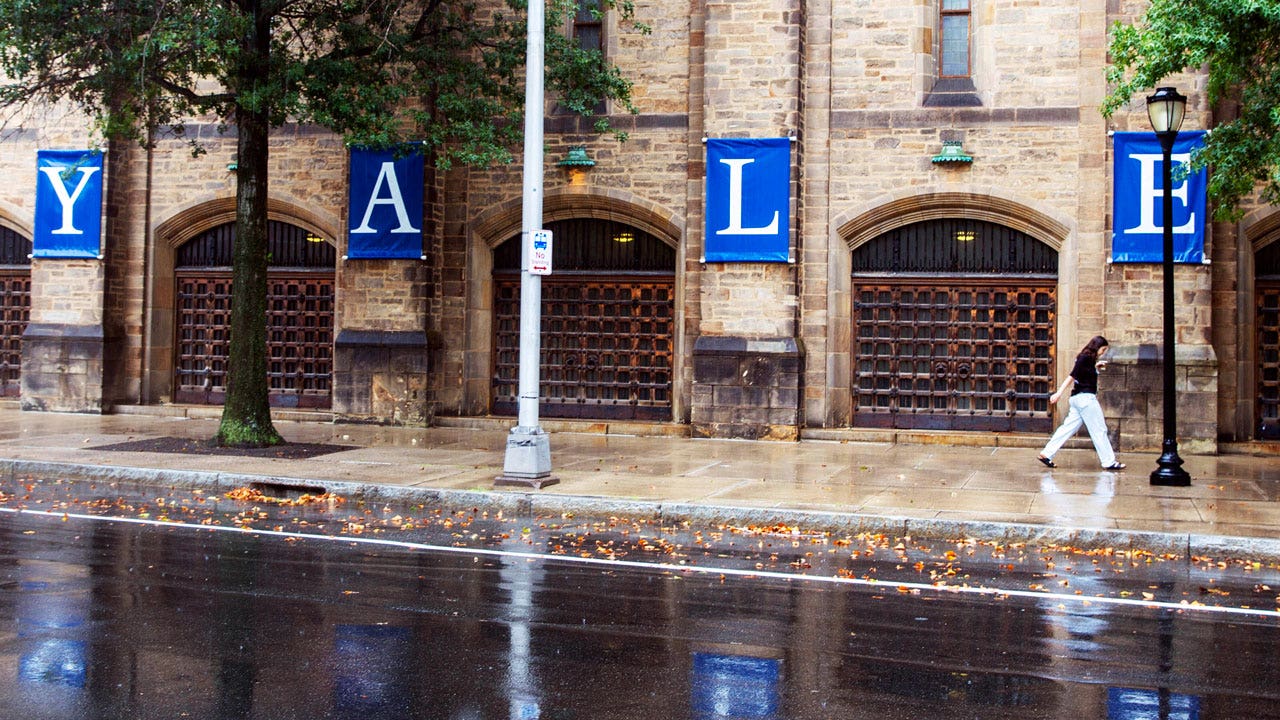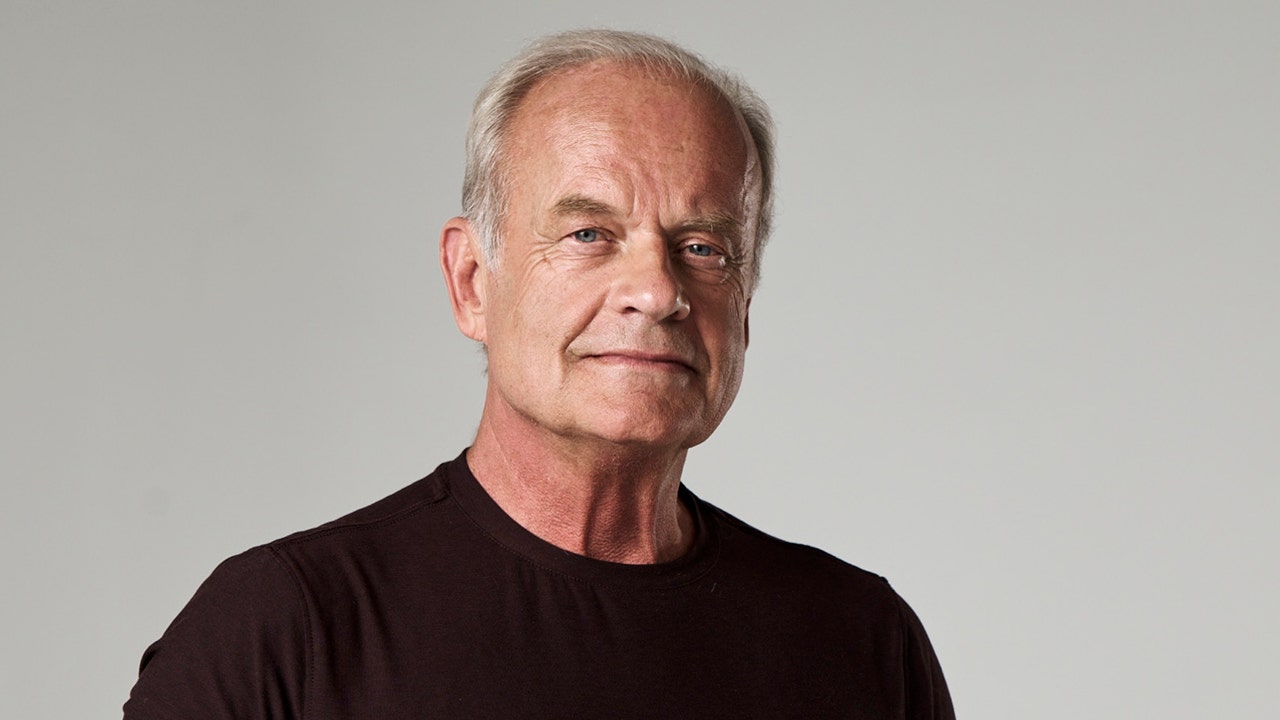Koreatown resident Scott Lyness was well aware that the city of Los Angeles was looking to address its food waste problem.
While riding his bike to work, he saw the growing number of green trash bins appearing on the sidewalks. He read the notice sent to his home instructing residents to expect green bins to be delivered at some point.
Still, Lyness wasn't prepared for what came next: 13 green bins deposited earlier this month outside the apartment building he manages on New Hampshire Avenue.
That's in addition to the three bins the city delivered the previous week to a smaller building it also manages next door, and the two green bins those properties were already using.
Lyness, 69, who works as a project manager at USC, said the two buildings don't have space to store that many full-size cans and don't generate enough organic waste to fill them. He has tried to get his tenants to contact city offices to say they don't need them. He said he has even thought about throwing them into the street.
“Our neighborhoods are being inundated with green trash bins,” he said.
City officials are working furiously to get Angelenos to separate more food waste (egg shells, coffee grounds, meat bones, unfinished vegetables, orange peels, greasy napkins) to comply with SB 1383, a state composting law passed in 2016. They've even implemented Professor Green, an online chatbot that can help residents decide what can and can't go in the green bin.
SB 1383 requires that 75% of organic waste be diverted from landfills by the end of the year and composted. Food and other organic waste sent to landfills is a major source of methane, a potent greenhouse gas. Methane has a global warming potential approximately 80 times greater than carbon dioxide over a 20-year period.
To achieve that goal, crews from the Los Angeles Bureau of Sanitation have deposited large quantities of 90-gallon green containers in front of some apartment buildings, including duplexes, triplexes, fourplexes and larger buildings that have been included in the city's curbside trash collection program.
Scott Lyness, 69, stands near green trash bins outside the apartment building he manages in Koreatown.
(Kayla Bartkowski / Los Angeles Times)
Residents are already familiar with green bins, which were long reserved for grass clippings and other garden waste, but are now also the destination for food scraps.
Most large apartment buildings in Los Angeles have been spared the recent round of green bin deliveries as they participate in recycLA, the city's garbage franchise program that relies on private waste haulers.
Sanitation officials say Angelenos who prefer smaller, more manageable containers should fill out a form to get a 30- or 60-gallon replacement. They note that the containers are part of a much larger effort by the city to achieve its zero waste goals and “lead on sustainability.”
Most of the contents of the green bins are taken to a facility in Bakersfield, where farmers can use the resulting compost, said sanitation spokeswoman Heather Johnson.
“While some may find [the bins] “It's an inconvenience right now, but in the short term it will result in more diverted waste and cleaner air,” Johnson said in an email.
Despite those serious intentions, Angelenos have been mocking the “Great Green Container Apocalypse of 2025,” as journalist and podcaster Alissa Walker framed the situation on Bluesky. Walker recently shared a photo showing what appeared to be 20 green bins in front of a property, right next to a discarded couch.
“This is probably my favorite,” he wrote. “I like how they lined them all up neatly in a row and then left the couch.”

Green organic waste containers outside an apartment building in Koreatown.
(Kayla Bartkowski/Los Angeles Times)
After Walker urged others to submit photos, Silver Lake resident Tommy Newman posted a photo on Bluesky showing eight containers outside an eight-unit building just south of Sunset Boulevard.
“Unless they have a juice bar there, how could they generate so much organic waste on a weekly basis?” wrote Newman, who works at a county housing agency.
In X, another observer summed up the absurdity in a different way. “Los Angeles gave every multifamily unit a green bin because of a bureaucratic dream about composting,” the person wrote. “I have 5 personally.”
In recent months, the Los Angeles sanitation agency has sent teams of “ambassadors” to neighborhoods to educate residents about the need to throw food into green bins.
That means keeping food out of the black 60-gallon containers where residents are accustomed to dumping most of their trash, which ultimately ends up in landfills. Recyclable items, including glass and aluminum, will continue to be disposed of in blue bins.
The changes were also detailed in flyers sent out by the city last summer, with a clear warning in capital letters: “Unless we hear from you immediately, we will deliver a 90-gallon green container to your residence.”
Lyness saw those alerts and learned of the change. But he maintains that most people would have missed the news or thrown away the fliers. Placing excessive amounts of bins around the city is simply not the way to encourage people to properly dispose of their organic waste, he said.
The city's new food waste program, projected to cost $66 million a year, is one of the reasons the City Council approved a huge increase in trash fees earlier this year, doubling them in some cases. Each 90-gallon green container costs the city $58.61, including taxes, although residents are not charged directly for recent deliveries.
Sanitation officials say they have delivered more than 65,000 green bins across the city, with 4,000 missing. For residents waiting to have them removed or replaced with a smaller container, only 1,000 orders can be placed on a typical business day, those officials said.
Around the corner on North Berendo Street, Lyness neighbor Lucy Alvidrez agreed the green bins were problematic as she hauled her black bin Thursday afternoon.
“They sure got carried away,” he said, pointing across the street to an apartment building with about two dozen green bins on the front sidewalk.
Alvidrez, 69, who has lived in the neighborhood for two decades, never had a problem with trash collection until the city provided four green bins, one for each unit in his building. She was luckier than Lyness: sanitation workers took away two of the containers when they requested it.
Alvidrez said he would prefer the city “spend our money feeding the homeless” instead of buying containers that no one needs, he said.

A dozen green organic waste containers occupy a street in Koreatown.
(Kayla Bartkowski/Los Angeles Times)
Nearby, Lyness opened a neighbor's green bin, which was filled to the brim with trash that was not compostable and should have gone into a black bin. If no one knows what to put in the green bins, nothing is going to improve, he said.
“It's garbage,” he lamented. “It's all rubbish.”












